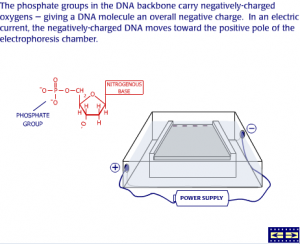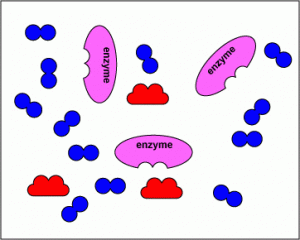A model organism is an organism which displays certain biological phenomena similar to humans and can be studied in place of human beings in order to get insight into the phenomenon. The findings made by studying such model organisms will provide information on how other organisms would behave with maybe little or no change. Model organisms are useful to study diseases as well as to find cures especially in those conditions where studying them in humans would be considered unethical. For example, to study cancer, you cannot give human beings cancer just to study the disease, however, you could do so in model organisms without causing to much ethical issues. The animation below describes some model organisms which are used by scientists and their advantages. To obtain information on the model organisms, just roll your mouse cursor over the organism to get the information.
The animation was provided by the DNA Learning Center and their YouTube Channel. “The mission of the DNA Learning Center is to prepare students and families to thrive in the gene age.”
Animation
[swfobject]1511[/swfobject]
Transcript
Each model organism has its own advantages and disadvantages. Choosing an appropriate model depends on the question being asked. Many laboratories find it useful to perform parallel experiments in two or more model systems to understand different aspects of a biochemical process.
From left to right in the animation:
Bacteria also known as Escherichia coli
- Prokaryote (no nucleus cell), single cell
- Approximately two micrometers
- Cheap and easy to grow in bulk
- Can be stored as frozen stock
- Generation time=30 minutes
- Can be used to store foreign DNA
- Can express foreign DNA
- Large number of mutants available
- Genome sequenced
Yeast also known as Saccharomyces cerevisiae and Schizosaccharomyces pombe
- Eukaryote (has cell nucleus ), single cell
- Approximately ten micrometers
- Cheap and easy to grow in bulk
- Can be stored as frozen stock
- Generation time=2 hours
- Has two sexes, useful for genetic mating experiments
- Can be used to store foreign DNA
- Can express foreign DNA
- Large number of mutants available
- Genome sequenced
Mouse also known as Mus musculus
- Vertebrate mammal
- Approximately seven centimetres
- Generation time=ten weeks
- Has two sexes, useful for genetic mating experiments
- Good number of mutants available
- Foreign DNA can be introduced
- Can “knock out” genes to study human diseases
- Genome sequenced
Thale cress also known as Arabidopsis thaliana
- Plant
- Between one to three centimetres tall
- Generation time= six weeks
- Has two sexes, useful for genetic mating experiments
- Large number of offspring (thousands+)
- Foreign DNA can be introduced
- Large number of mutants available
- Genome sequenced
Nematode worm also known as Caenorhabditis elegans
- Invertebrate, multi cellular
- Approximately 0.5 millimeters
- Cheap and easy to grow in bulk
- Can be stored as frozen stock
- Generation time= three days
- Has two sexes, useful for genetic mating experiments
- Large number of offspring (thousands+)
- “Fate” of all 959 cells known
- Foreign DNA can be introduced
- Large number of mutants available
- First multicellular organism to have entire genome sequenced
Fruit fly also known as Drosphila melanogaster
- Invertebrate
- Approximately three millimeters
- Fairly cheap and easy to grow
- Generation time= twelve days
- Has two sexes, useful for genetic mating experiments
- Large number of offspring (thousands+)
- Foreign DNA can be introduced
- Large number of mutants available
- Genome sequenced
Zebrafish also known as Danio rerio
- Vertebrate
- Approximately two to four centimeters
- Generation time= three months
- Has two sexes, useful for genetic mating experiments
- Large number of offspring (thousands+)
- Good number of mutants available
- Eggs are clear; developmental changes can be seen



